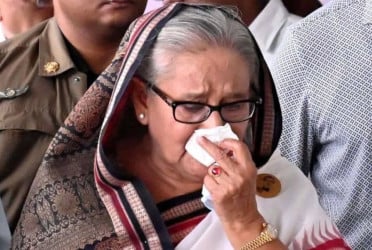12,515 more schools to end double shifts in January
- Update Time : Saturday, December 7, 2024

Education Desk
The government is set to transition 12,515 more schools to a single-shift system in January as part of its plan to phase out double-shift schools.
According to Farid Ahmed, secretary of the Ministry of Primary and Mass Education, the transition aligns with the 4th Primary Education Development Program, which aims to convert 50% of double-shift schools to single-shift by June 2025. The subsequent 5th Program will ensure all schools adopt the single-shift model.
This initiative aims to ensure quality and inclusive education for all students, addressing the challenges posed by the current double-shift structure, which limits learning hours and widens educational disparities.
Despite progress, the current state of double-shift schools raises concerns about the feasibility of achieving the 2025 target. The Annual Primary School Census 2023 reveals that only 19% of the country’s 65,567 government primary schools currently operate on a single shift, leaving over 10 million children still attending double-shift institutions.
In 2019, 14 % of schools were operating on a single shift. This figure increased to 15% in 2020 and 2021, and to 17% in 2022.
CHALLENGES
The double-shift system divides the academic day into two shorter sessions, resulting in reduced learning hours and limiting students’ interaction with teachers. According to the Annual Sector Performance Report 2021, students in double-shift schools receive up to 34% fewer learning hours compared to their peers in single-shift schools.
Younger students in Classes 1 and 2 lose 137 hours annually, while those in Classes 3 to 5 miss up to 515 hours.
Teachers also face significant challenges. With class durations often reduced to 30–35 minutes, they struggle to complete the curriculum or provide personalized attention. “We are always racing against time, and some students inevitably fall behind,” said Mukades-Uz-Zaman and Babu Prokash Chandra Roy, assistant teachers at Ideal School and College’s Banasree branch.
Mazeda Begum, Acting Principal of Viqarunnisa Noon School & College, expressed similar concerns: “The short class periods leave little room for in-depth teaching, and many teachers feel they cannot adequately address their students’ diverse learning needs.”
ADDRESSING INFRASTRUCTURE AND RESOURCE GAPS
The transition to single-shift schools requires significant investment in infrastructure, teacher recruitment, and educational resources. Many rural areas in Bangladesh still rely heavily on double-shift schools due to high demand and limited facilities.
Experts warn that expanding school infrastructure and addressing teacher shortages are critical to ensuring the success of the transition. “Without addressing the underlying issues of infrastructure and teacher support, many students will continue to struggle,” said educationist Rasheda K Chowdhury.
THE GLOBAL CONTEXT
Bangladesh’s double-shift system falls behind global standards. For example, primary students in India receive over 1,270 instructional hours annually, compared to 800–1,000 hours in Bangladesh’s double-shift schools. Prolonged reliance on double shifts, as seen in other countries like Kenya and the Philippines, has often led to poor educational outcomes.
THE PATH AHEAD
While the plan to end double shifts is a welcome step, experts emphasize the need for a holistic approach to educational reform. Expanding school facilities, overhauling teacher training programs, and revising curricula are essential for achieving meaningful progress.
The government’s ambitious plan represents an important step toward educational equity, but the road ahead requires substantial investment, comprehensive planning, and a long-term commitment to address systemic challenges.















